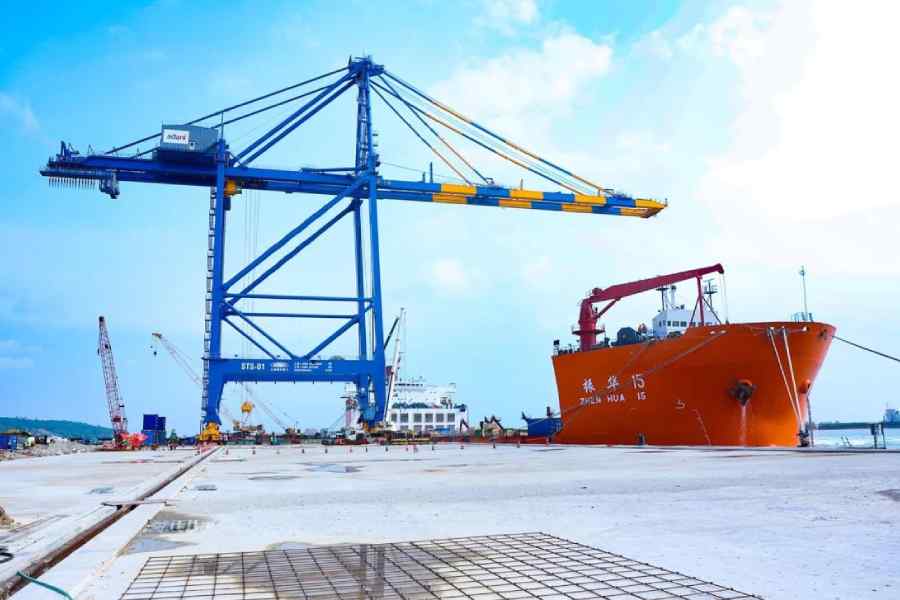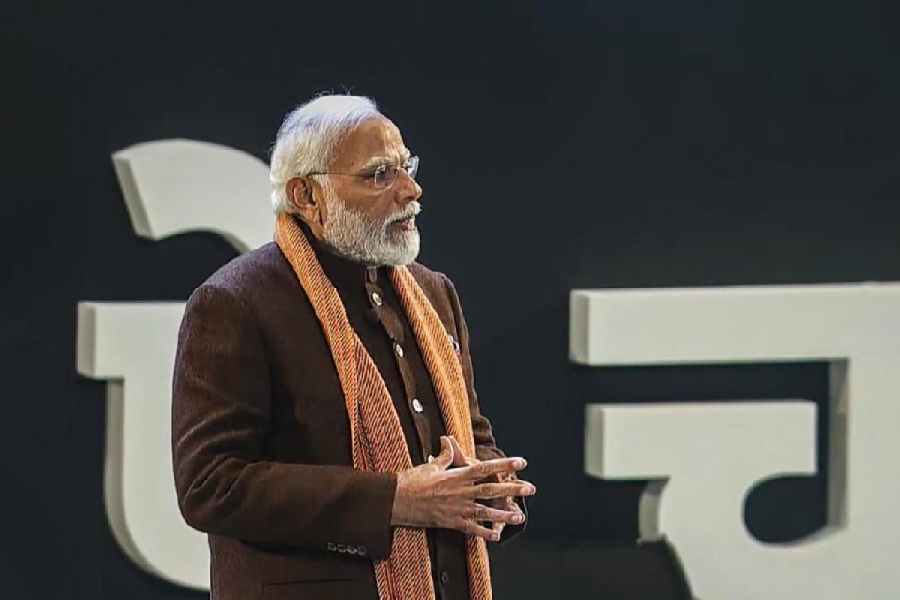Of all the Indian states I know, Kerala has the most active civil society organisations that flourish independently of governments and political parties. These groups work in many spheres, including science, health, education, and — not least — environmental sustainability. The work of these groups is often enriched by the participation of scholars and scientists. This interaction between academics and the wider public is perhaps more engaged and constructive in Kerala than anywhere else in our Republic.
In the last thirty years, I have visited Kerala at least two dozen times, where, in public meetings on a range of themes, I have witnessed at first-hand the vigour and dynamism of the civil society space in the state. My most recent visit was last month, at the invitation of the Janakeeya Samara Samithi, an organisation representing the fisherfolk of the southern part of the state. The Samithi had been active for some years in opposing a massive port being built at Vizhinjam. The state government claims this port will be no less than “the Singapore of India”, bringing a surge of prosperity in its wake. The people of the region, however, have been decidedly sceptical of these claims, seeing it rather as a prime example of what is known as ‘destructive development’.
To understand the seaport project more thoroughly, the Janakeeya Samara Samithi commissioned a group of scholars to study its impact. The report this group produced is a model of its kind. It represents the best kind of interdisciplinary research, bringing together the perspectives of ecologists, earth scientists, climate scientists, sociologists, and economists. The text is buttressed with a great deal of empirical data and by telling visuals of the area before and after the port construction began. The report draws upon an extraordinarily large number of scientific studies on all aspects of the area. The analysis is further enriched by fresh field research, interviews, surveys, and public consultations.
The report that these fine, and public-spirited, scientists of Kerala have produced bears the title: Our Beaches, Our Sea: Heritage of Fishing Communities, Usufruct of all Citizens: Impact of the Vizhinjam International Seaport on the Beaches, Coastal Sea, Biodiversity, and the Livelihoods of Fishing Communities in Thiruvananthapuram District. Few universities in India would be capable of conducting such a rigorously-researched study, and certainly no government department. The data and analysis presented here comprehensively show that the Vizhinjam seaport will bring more harm than benefit to the people of Kerala.
Before the port construction began, Vizhinjam was the largest and most important fishing village in Kerala. It was home to some 4,500 fishing families and several thousand boats. It also served as a safe harbour for fisherfolk from other villages during the monsoon. The report significantly observes that “many educated youths within the community have deliberately chosen to remain engaged in fishing due to its viability as a sustainable and profitable self-employment option. They adopt modern, small-scale, technology-driven fishing techniques and have developed innovative approaches to directly connect with consumers through their established institutional systems. The shoreline and sea hold deep cultural significance for them.”
The report documents how the promoters, Vizhinjam International Seaport Limited, suppressed, manipulated, and misrepresented data to get the requisite environmental clearance. The corporation’s ‘Environmental Impact Assessment’ report downplayed the project’s impact on biodiversity, radically underestimated the loss of fishing livelihoods, minimised the negative consequences for tourism, ignored the coastal erosion that the project would cause, and disregarded the aesthetic value of cliffs and beaches that, after the port was built, would be forever lost to humanity.
The scientists’ report meticulously demonstrates how the proposed project — whose promoters are the Adani Group — is grievously flawed across four major categories, as explained below:
With regard to economics, the project has been plagued by time delays, cost overruns, and inflated future benefits;
With regard to society, the project shall intensify inequalities through the displacement of fisherfolk and the widening of the gap between the rich and the working class. The project shall increase the burden on the women of the coastal villages who may be forced to go elsewhere and work as domestic servants for survival;
With regard to ecology, the project shall have deeply damaging effects through the destruction of beaches and of marine life and the pollution of water sources. These ecological costs shall further hurt the livelihood prospects of fisherfolk. Coastal ecosystems are inherently fragile, and such mega projects can cause irreversible damage. Besides, the threat of climate change already looms over us; unpredictable weather events such as cyclones will now wreak even greater devastation on the area if they strike it.
The scientists’ report calculates that the loss of ecosystem services, which include activities like fishing, coastal protection, tourism, water quality, preservation of culture and aesthetic values and so on amount to an estimated Rs 2027 crore every year. This figure in itself makes the project economically unviable for Kerala;
Finally, with regard to politics, the project was pushed through by the use of secretive, non-transparent, and altogether anti-democratic means. The Bharatiya Janata Party government at the Centre and the Congress-led and Left governments in Kerala were all culpable in this gross violation of democratic principle and procedure.
In this manner, this report demonstrates that from the standpoints of economic viability, social justice, environmental sustainability and democratic procedure, the Adani-sponsored VISL project is antithetical to the citizens of Kerala and of India.
And there are other considerations that militate against it too. There is, for example, the aesthetic dimension, the fact that the project will destroy many beaches which currently serve as a “shared haven for every citizen”, a space for social and spiritual nourishment, a venue for music, sport and festivals. Finally, there is the national security dimension, the fact that the Adani Group already controls thirteen seaports and eight airports. Permitting and encouraging a single private firm to have such a decisive say in the flow of human, commercial, and vehicular traffic across India, and between India and the world, surely constitutes a grave risk to the security and safety of the country.
Of the area which will be adversely affected by this ill-conceived project, the report observes: “These communities, deeply rooted in the coastal regions, have been the guardians of the seas for generations. Their experience in sustainable fishing practices is a beacon of ecological wisdom that safeguards the marine resources and ensures food security in the form of the tasty seafood delights which most Keralites cannot do without! Their labour also generates valuable seafood exports which earns the country substantial foreign exchange. Their traditions enrich the cultural tapestry of Kerala, making it a unique and attractive destination for tourists.”
Elsewhere, the report remarks: “We emphasize that the beaches are more than just sandy terrains at the confluence of land and sea. They should not be treated as commodities for private interests or subject to inappropriate infrastructure development. Beaches and the adjacent coastal waters must be recognized as the foremost entitlement upholding the fundamental right of active fisherfolk to sustain their livelihoods, and patrimonial right, and, importantly also affording all our nation’s citizens the opportunity to cherish and enjoy these vital resources.”
Significantly, the report is not animated merely by the spirit of critique. It thus offers a series of constructive suggestions to mitigate the social and environmental impacts of the project. The authors state that their report “is not a quest to block development”; rather, “it is a plea for environmentally and socially sustainably development that is the only viable path for Kerala.” They add: “What we face is a mega project devoid of environmental safeguards, a behemoth controlled by corporate interests driven solely by private profits, with little regard for the fragile ecosystem and the loss of traditional occupations.” The authors further note: “Much of the investment is made by the Government of Kerala, drawing from its own finances, and borrowing heavily from financial institutions, while the livelihoods of fishing communities and the sustainable interests of the common people are recklessly mortgaged.”
This report of the scientists of Kerala is available online (see https://www.vizhinjamtheeram.org/wp-content/uploads/2023/12/1.OUR-BEACHES-OUR-SEAS-JPS-Report-December-2023.pdf). I urge interested readers to consult it. I am sure they will be as impressed as I was by the depth of its documentation and the strength of its arguments. The report is a great public service, not just to the people of Kerala but also to every democratically-minded Indian who should be more alert to the spurious and distorted claims made by large corporations and the political regimes that support them.
ramachandraguha@yahoo.in











